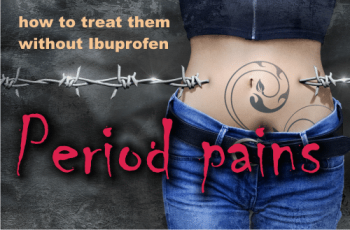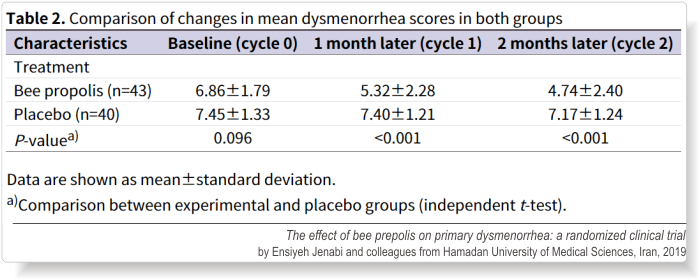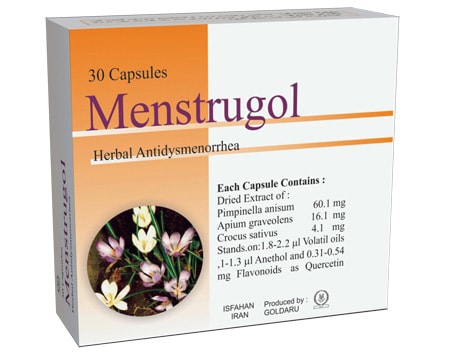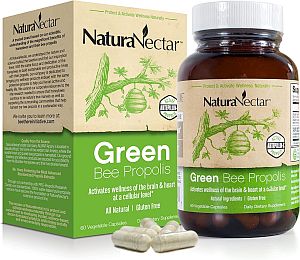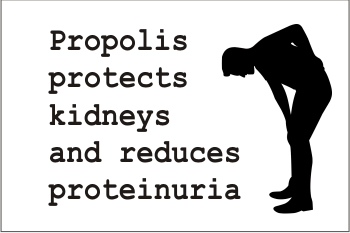Period cramps, aka menstrual pains, are a real pain. A girl knows what I am talking about. How to get rid of period pains is a frequent question that’s often answered with “Ibuprofen”. Natural alternatives include royal jelly, propolis, cinnamon, damask rose, anise, or celery.
But Ibuprofen works. Why change it? Because it is not side-effect-free.
My grandma used to say “a woman suffers a lot in her lifetime” and she was fully and completely at peace with this situation. A woman would suffer not because of her status in society, but because this is the way God made her. And if God made her like this, all we can do is accept it!
A woman gives birth to her children, but her suffering does not start with birth. It happened long before, with her first period.
Yes, period pains.
· For as many as 80% of women, pain accompanies the days of menstruation, especially the first one.
· It can happen at any age, from early teens to menopause time.
· In 5% to 10% of women the pain is severe enough to disrupt their life.
· If your mother suffered from period pains, you are more likely to suffer too.
· In 40% of women, period pain is accompanied by premenstrual symptoms, such as bloating, tender breasts, swollen stomach, lack of concentration, mood swings, clumsiness and tiredness.
I guess my grandma is right: God made woman to suffer. 🙁
But moving beyond this, even in her days and surely long before her, women learned to ease these pains and associated symptoms with herbs and tricks. And here I will talk about one important natural product, which was recently confirmed by scientific studies to help a lot in preventing and treating period pains.
Dysmenorrhea = pain during menstruation or menstrual cramps, usually in the pelvis or lower abdomen. It starts around the time menstruation begins and lasts up to three days.
Like any other pain, dysmenorrhea can be primary or secondary, depending on the existence of an underlying cause. If there is no associated underlying condition, it is called primary dysmenorrhea. The women have increased activity of the uterine muscle with increased contractility and increased frequency of contractions.
Secondary dysmenorrhea has a specific underlying cause, typically a condition that affects the uterus or other reproductive organs. Here, the cause is often endometriosis, which is visually confirmed by laparoscopy in approximately 70% of adolescents with dysmenorrhea. The rest of 30% is caused by leiomyoma, adenomyosis, ovarian cysts and pelvic congestion.
How to relieve period cramps?
• Conventional medicine, also known as allopathic medicine, recommends treatments such as:
1. the common nonsteroidal anti-inflammatory drugs (NSAIDs) such as ibuprofen and naproxen. They are indeed effective in relieving the pain of primary dysmenorrhea. Unfortunately, these drugs come accompanied by some side effects, such as nausea, dyspepsia, peptic ulcers, and diarrhea. There are also people who are unable to take NSAIDs and are prescribed a COX-2 inhibitor such as celecoxib. With other side effects.
2. Hormonal birth control pills, which may improve symptoms of primary dysmenorrhea. “May” – as a 2009 systematic review found limited evidence that birth control pills containing low or medium doses of estrogen reduce pain associated with dysmenorrhea.
3. Norplant and Depo-provera are also effective, since these methods often induce amenorrhea (absence of a menstrual period in a woman of reproductive age).
4. The intrauterine system (Mirena IUD) may also be useful in reducing pain symptoms.
5. Transdermal nitroglycerin was also considered effective in a review published in 2002.
• Alternative medicine
There are some supplements which are recommended today to ease the pain: melatonin, vitamin E, fennel, dill, chamomile, cinnamon, damask rose, rhubarb, guava, uzara, fenugreek, ginger, valerian, zataria, zinc sulphate, fish oil or vitamin B12. And my favorites, royal jelly and propolis. But there is insufficient scientific evidence that they work or that they are safe.
Royal jelly reduces period cramps
Royal jelly has the capacity to mimic human estrogen, as shown by a team of Japanese researchers since 2007.
Effect of Royal Jelly on premenstrual syndrome among Iranian medical sciences students: a randomized, triple-blind, placebo-controlled study. Each participant took one royal jelly capsule orally (1000mg) per day, starting on the first day of menstruation and continued the same treatment daily throughout two consecutive menstrual cycles.
The results showed that after 2 months of consumption, royal jelly was effective in reducing premenstrual syndrome. (study).
Propolis is effective against periodic pain
Propolis has been scientifically proven to be effective, is side-effect-free, and has tons of other healthy properties. (see for example the Brazilian Green Propolis health benefits).
Scientifically proven.
♦ A study published online in July 2019 by Ensiyeh Jenabi from Hamadan University of Medical Sciences, Iran, evaluated the effect of propolis on primary dysmenorrhea, in female students from Hamadan, western Iran.
The participants included 43 students in the bee propolis group and 40 students in the placebo group.
1. The bee propolis group received a 500-mg bee propolis capsule (Shahd Golha Honey Company, Isfahan, Iran) taken daily from 2 days before menstruation until the third day of menstruation, for 2 cycles.
2. The placebo group received a 500-mg starch capsule, taken in the same way as above.
Here is what the scientists said about the outcome:
Our study showed that the daily use of a 500-mg capsule of bee propolis compared with placebo decreased primary dysmenorrhea during the first and second months after use. Therefore, it can be an alternative to NSAIDs (nonsteroidal anti-inflammatory drugs) for relief of primary dysmenorrhea; no adverse effects were observed during its use.
Other studies made on bee products showed similar results:
- honey with mefenamic acid. Using this combination, a team conducted by Amiri Farahani et al. obtained similar results and published them in 2017 in the study, Comparison of the effect of honey and mefenamic acid on the severity of pain in women with primary dysmenorrhea., (honey enhances the drug power!)
- honey and honeybee larvae (aka Apilarnil) proved to exert the same good results in treating period pains. The study, conducted in 2004 by Meda et al, Therapeutic uses of honey and honeybee larvae in central Burkina Faso, proved the effectiveness of honey and bee larvae against some conditions, such as: measles, period pains and postnatal disorders.
Bee larvae are used by the people in Burkina Faso for the treatment of various gastrointestinal disorders, respiratory ailments, fatigue, vertigo, ophthalmic disorders, toothache, measles, wounds, burns, chest pains, period pains and postnatal disorders, male impotence, as well as its application as a skin cleansing agent.
- propolis. Golder reported in his study from 2004 “The bee glue as presented by the Graeco-Roman literature.”, that bee propolis treated chronic backache, hip pain, and fresh injuries of muscles and tendons.
Other effective remedy for period pains:
Menstrugole
Menstrugole is an analgesic and antispasmodic herbal drug containing about 80 mg of dried extract of Apium graveolens (celery), Pimpinella anisum (anise), and Crocus sativus (saffron).
Anise: The essential oils have antispasmodic effects and the main contributor to this effect is anethole, which is found in anise. Anethole has a chemical composition similar to that of catecholamines such as adrenaline, noradrenalin, and dopamine. Anise seeds are used for analgesic, carminative, aromatic, disinfectant, and diuretic effects in traditional medicine.
Saffron: According to studies it has antineoplastic, antiarthritic, and powerful antioxidant activity. (have you heard of Saffron honey? It’s one tasty honey, good for sex life and so much more!)
Celery: Apigenin, apiin, flavonoids and limonene and selenin formed in celery seeds are sedative and antispasmodic. Effects which are clinically approved.
Due to the soothing and anti-inflammatory effects of its constituents, Menstrugole is effective in reducing menstrual pain through its effect on smooth muscle contraction. In Iran, the drug is used to induce menstruation and to decrease lumbar and cramping pain. One study showed that it can even diminish postpartum pain.
♦ A study published in 2018, Effect of Menstrugole on primary dysmenorrhea: a randomized clinical trial, conducted by Fatemeh Shobeiri from Hamadan University of Medical Sciences, Hamadan, Iran, showed that 500 mg of dried extracts of celery, saffron and anise (taken as Menstrugole capsules) decreased pain severity in young females and can be considered by health care providers for the treatment of primary dysmenorrhea.
It is recommended to take 1 -2 capsules 3 times a day. But unfortunately, it can be found only on the Iranian market…
On the other hand, propolis can be found everywhere, it is safe, and it also has other health properties. I am personally amazed by all the studies telling us how this propolis is good at almost everything.
Make sure you buy the good stuff! Here is an example from Amazon (affiliate link):
Oh, and girls, you can even have a nice drink while on period. Propolis will protect your liver, too!
Other references:
https://en.wikipedia.org/wiki/Dysmenorrhea

